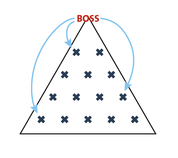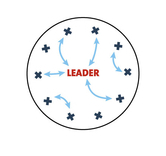The chair is not in charge of your meeting
It is a little-known fact that ultimately it is the board that is in charge of your meeting, not the chair. According to the principles of parliamentary procedure and Robert’s Rules of Order, the chair runs the meeting while subject to the will of the body as a whole.


If two members of the governing body disagree with a ruling, decision or order of the chair, they may APPEAL the decision, and the group will decide the matter (unless it is a matter on which there cannot be two opinions, such as a clear statement in the bylaws).
This model can be hard for people experienced in the hierarchy model to accept, but it is critical for the success of your city council, school board, planning commission or nonprofit board. A chair who understands these principles, who controls procedure in accord with the group’s adopted rules, and who assists the group to make its own decisions, without undue pressure or moral suasion, will serve the organization well. The job will also prove much more manageable, and more rewarding, than trying to make everyone do what you want.
This is the flow of authority which results from these principles.
| – The group adopts its rules or guidelines. |
| – In attending, members accept and are bound by the rules. |
| – During meetings, the chair applies the rules for the benefit of the group. |
| – All persons present at a meeting must obey the legitimate orders of the chair. |
| – Any member who disagrees with a ruling, decision or order by the chair may appeal the ruling. |
| – If another member seconds the appeal, the group will decide by majority vote whether the ruling, decision or order is legitimate. |
| – The chair obeys the group’s decision. |
If you run your meeting in accord with these principles, you will avoid power-struggles and unnecessary strife, and serve your organization better. It’s different, but it works!
Download this article, Remedies for abuse of authority by the chair in a meeting, to see the exact process described in Robert’s Rules of Order Newly Revised, 12th edition.

